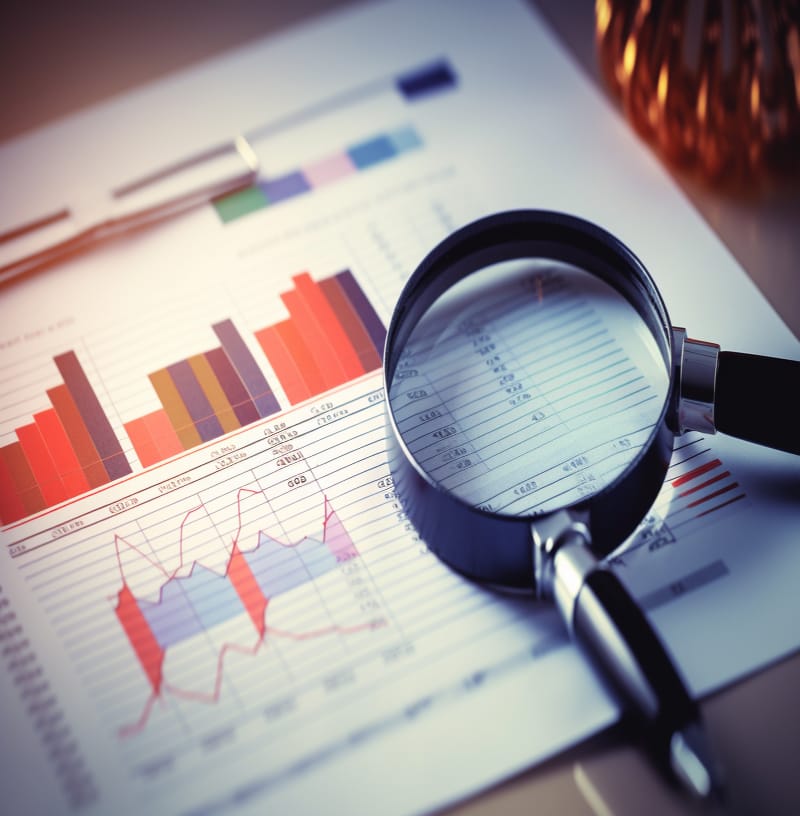Data Mining Interview Questions
Data mining interview questions and answers offer you a comprehensive guide of frequently asked data mining interview questions with their corresponding answers ranging from basic concepts of data mining.
Data mining, the practice of extracting valuable information from large datasets, has become an indispensable skill in a digital environment where data abounds and is valuable.
Here we discuss common data mining questions and answers!

1.What is Data mining?
Data mining is a process used to turn raw data into useful information, allowing businesses to identify patterns in large batches of data and develop more effective marketing strategies.
It involves the use of statistical techniques, machine learning algorithms, and database systems to extract useful information from data.
2.What are the benefits of Data mining?
Data mining has numerous benefits, including improved decision-making, cost savings, increased revenue, customer retention, and fraud detection. It can help businesses gain insights into customer behavior, market trends, and operational efficiency.
3.What are some applications of Data mining?
Data mining has applications in various industries, including finance, healthcare, retail, telecommunications, and government. In finance, data mining is used for fraud detection, risk assessment, and investment analysis.
4.What are some Data mining techniques?
Some Data mining techniques include classification, regression, clustering, and association rule mining.
5.What is classification in Data mining?
Classification is a part of the information life cycle management process, enabling organizations to effectively segment their potential customers. It involves sorting and categorizing data into distinct classes, such as cars and bikes.
6.What is association rule mining in Data mining?
Association rule mining helps businesses optimize their strategies and increase revenue generation by extracting patterns from the data.
7.What is outlier detection in Data mining?
Outlier detection is crucial for detecting data that is not in the common slot, which can affect predictive modeling or analytics.
8.What is clustering in Data mining?
Clustering is another method used to group customers based on similarity, such as Netflix’s creation of clusters for different content types.
9.What is regression in Data mining?
Regression is used to evaluate or measure the change in one variable with respect to another, establishing a linear relationship between them.
10.What are the benefits of Data mining for businesses?
By understanding the importance of Data processing and implementing effective data mining strategies, businesses can improve their performance and profitability.
11.How does Data mining help businesses identify patterns?
Data mining processes include data extraction, data preprocessing, extracting patterns, and visualizing data. Data mining consists of various techniques such as classification, regression, clustering, and association rule mining, which are used to create predictive models from the data.
12.What is the role of Data mining in customer segmentation?
Classification is a Data mining technique used to sort and categorize data into distinct classes, such as cars and bikes, which can help organizations effectively segment their potential customers.
13.What is a Data analysis process?
A Data analysis process involves selecting columns from a data set, separating them into specific columns, and filtering out specific rows.
14.How can you retrieve a specific row in a Data analysis process?
To retrieve a specific row, you can use the combine function to filter out multiple rows and the query function to select rows based on specific criteria.
15.How can you access individual elements from a Data frame using operators?
You can access individual elements from a Data frame using various operators such as assignment operators, arithmetic operators, logical operators, and relational operators.
16.What is a Data frame and how can it be used in a data analysis process?
A Data frame is a two-dimensional data structure that can be used to store and manipulate data. It can be used in a data analysis process to access individual elements using various operators.
17.What are flow control statements in SQL?
Flow control statements in SQL are used to control the execution order and manipulate the order of execution. These statements can be used in selector statements, which allow for data manipulation based on conditions.
18.What are user-defined functions in SQL?
User-defined functions in SQL are custom functions that can be created by the user to perform specific tasks on Data. These functions can be used in queries to simplify complex calculations and make the code more readable.

Data mining Training

19.What is the FLs clause in SQL?
The FLs clause is a check used in SQL to determine if a customer will churn out or will be using the same network. If the value is true, the churn will be given a discount.
20.What is a table function in SQL?
A table function in SQL is a function that returns a table as its result. These functions can be used to perform complex calculations and simplify queries.
21.What is a user-defined function in SQL?
A user-defined function in SQL is a custom function that can be created by the user to perform specific tasks on data. These functions can be used in queries to simplify complex calculations and make the code more readable.
22.What is a selector statement in SQL?
A selector statement in SQL is a statement used to manipulate Data based on conditions. These statements can be used in combination with flow control statements to perform complex queries.
23.What is the purpose of looping statements in SQL?
The purpose of looping statements in SQL is to repeat actions repeatedly. These statements can be used to perform tasks such as counting data or iterating over a table.
24.What is a vector in SQL?
A vector in SQL is a Data type used to store a collection of values. Vectors can be used in looping statements to perform operations on multiple values at once.
25.What is R?
R is a language developed by statisticians for statisticians, providing a powerful tool for statistical analysis and visualization.
26.What is RStudio?
RStudio is a tool for analyzing Data in R. It provides a history of commands executed, a window for installing new packages, visualizing plots, and accessing help.
27.How do I install R packages?
To install a desired package, the user needs to first install and load the package using the “install.packages” and “library” functions in R.
28.How do I read Data in R?
R provides various functions for different Data formats. For example, the “read H T M L table” function can be used to read Data from HTML tables.
29.How do I select columns in R?
To select a specific column in a Data set, use a dollar symbol to get a list of all columns. To select individual columns, use square braces to represent rows and columns.
30.How do I create a Data frame in R?
A Data frame is a table with columns of the same Data type, representing records of the Data frame. For example, the “customer churn” Data set is a Data frame.

Data mining Online Training

31.How is arrays implemented in Python?
Arrays in Python are implemented by arranging elements by row, column, and character. An array is created using the combined function, with dimensions set to the number of rows, columns, and dimensions.
32.How is an integer vector created in Python?
An integer vector is created in Python using the range() function.

33.How is a character vector created in Python?
A character vector is created in Python using the list() function and string values.
34.How is a matrix created in Python?
A matrix is created in Python using the list() function and nested lists.
35.How is Data extracted from a matrix in Python?
Data is extracted from a matrix in Python using the index values.
Now it’s time to test your memory with MCQ’s!
1) What is the process used to turn raw Data into useful information?
Data extraction
Data preprocessing
Data mining
Data visualization
2) What type of Data structure is a vector in R?
Two-dimensional
One-dimensional
Three-dimensional
Multi-dimensional
3) What is the tool used for analyzing customer Data in R?
Flow control statements
n-bill functions
SQL functions
Selector statements
4) What technique gathers user ratings of books from the Data set?
User-based collaborative filtering model
Matrix transformation
Value predictions
Distribution analysis
5) Which function is used to create a distribution of readings in R?
combine function
mutate function
ggplot function
jembarr function
6) In Data analysis, how does the process of Data cleaning contribute to preparing the Dataset for exploration?
Data cleaning involves removing duplicate ratings and users who have rated fewer than three books, which simplifies subsequent Data analysis and ensures reliability.
Entails altering the Data distribution to balance the classes of a Dataset.
Data cleaning includes incorporating external Data sources to enrich the Dataset for more complex analysis.
Strictly about formatting the Dataset to make it visually appealing for presentation purposes.
7) What role does association rule mining play in Data mining processes?
Directly manipulates the Data to increase the usability of the Datasets without analyzing the relationships.
Association rule mining reduces the size of the Dataset by identifying and removing irrelevant features.
Segments the Data into distinct classes without considering any associations between items.
Association rule mining helps businesses to optimize their strategies and increase revenue generation by finding relationships between different items.
8) How does outlier detection contribute to the quality of Data mining processes?
Outlier detection is crucial for identifying anomalistic Data that can affect predictive modeling and analytics, ensuring the accuracy and reliability of results.
Replaces missing Data points to complete the Dataset without regard for anomalies.
Outlier detection focuses primarily on creating aesthetic Data visualizations for easier interpretation.
Increases the volume of Data by introducing new variables for analysis.
9) what is the purpose of user-defined functions?
To enhance the graphical interface for users with limited coding experience.
Generate random Data samples for testing algorithms.
To Databases and retrieve Data in real-time.
User-defined functions in R allow for the creation of custom operations that can be applied to various Data structures to perform specific tasks efficiently.
10) What is the significance of the matrix and array Data structures in the analysis of multidimensional Data?
It is used interchangeably with no distinction between them when performing Data analysis.
Matrix and array Data structures are specifically designed to handle real-time streaming Data only.
These are primarily textual Data structures, best used for the analysis of large volumes of unstructured text.
Matrix and array Data structures are used for organizing and manipulating homogenous elements in two-dimensional and multi-dimensional spaces, respectively, for complex Data analysis.
Coming to end of the session!
Data mining is an indispensable tool with numerous applications and benefits, requiring expertise in statistical techniques, machine learning algorithms, and Database systems.
Common techniques employed include association rule mining, clustering classification, and anomaly detection while common obstacles include Data quality integration security privacy concerns as well as government regulations for privacy regulations.
Hope this Data mining interview questions and answers help you upskill on the technology. Good Luck!

Data mining Course Price


Harsha Vardhani
Author